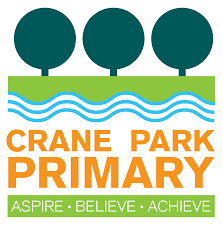
Crane Park Primary School is a vibrant educational institution located in the heart of Twickenham, London. It serves a diverse community of pupils aged 4 to 11, with a strong emphasis on inclusive learning and digital literacy. The school is committed to providing a safe, modern, and engaging environment that supports both academic and personal development.
Crane Park Primary School faced significant limitations with its ageing network infrastructure. The existing switches and Wi-Fi access points were outdated, resulting in slow connectivity, frequent dropouts, and limited coverage across the premises. These issues were increasingly disruptive to both teaching and administrative operations, particularly as the school expanded its use of cloud-based learning platforms and digital resources. The comms cabinets were also cluttered and poorly organised, making maintenance and troubleshooting difficult. With the school closed during February Half Term, it was an ideal opportunity to carry out a full infrastructure refresh without disrupting day-to-day activities.
Qlic IT proposed a comprehensive upgrade to Crane Park Primary School’s network infrastructure. Led by our experienced engineer, Adam Wignall, the project was scheduled to take place during the February Half Term to ensure minimal disruption. The scope included the removal of all ageing network switches and Wi-Fi access points, replacing them with high-performance, enterprise-grade equipment to support faster speeds and wider coverage. New switches were deployed to improve network reliability and scalability, while modern Wi-Fi access points were strategically installed to ensure seamless connectivity throughout classrooms, offices, and communal areas.
In addition, the comms cabinets were fully reorganised and tidied. This involved re-labelling cables, removing obsolete hardware, and implementing structured cable management to simplify future maintenance. The project was completed within the scheduled timeframe, with thorough testing conducted to ensure optimal performance. Adam worked closely with the school’s IT coordinator to ensure all requirements were met and that staff were briefed on the new setup.
The upgraded network infrastructure has significantly improved the school’s digital capabilities. Staff and pupils now benefit from faster, more reliable internet access, enabling smoother use of online learning platforms and cloud-based tools. The new Wi-Fi coverage ensures consistent connectivity across all areas of the school, supporting mobile devices and interactive teaching methods. The tidy comms cabinets have made ongoing maintenance far more efficient, reducing downtime and support requests. Overall, the project has enhanced the school’s operational efficiency and created a more robust foundation for future technology initiatives.
- Replaced outdated switches and Wi-Fi with modern, high-performance equipment
- Improved network speed, reliability, and coverage across the school
- Organised and tidied comms cabinets for easier maintenance
- Completed project during school closure to avoid disruption
- Enhanced digital learning experience for pupils and staff

